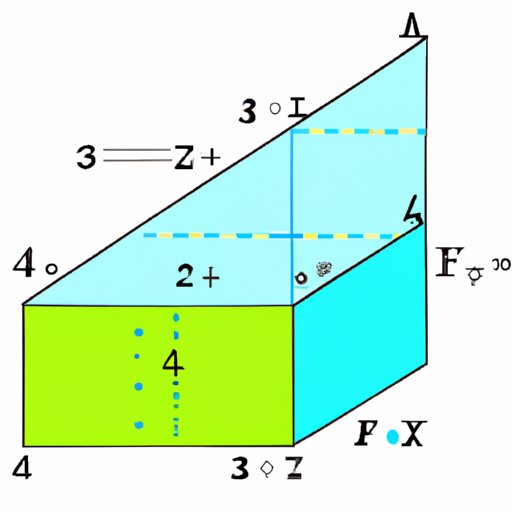Finding the Area of a Square Made Easy
If you have ever worked with a square, you probably know that it is a polygon with four equal sides and four 90-degree angles. What you may not know is how to find the area of a square. Calculating the area of a square is an essential skill for people who work in carpentry, crafting, architecture, or engineering. Fortunately, finding the area of a square is not difficult and can be done in just a few steps. In this article, we’ll explain how to find the area of a square and provide some practical examples and practice problems to help you master this important skill.
Step-by-Step Guide for Finding Area of a Square
We use the formula A = s^2 to find the area of a square. In this formula, A represents the area of the square, while s is the length of one of its sides.
- Start by measuring one side of the square. We will call this measurement “s”.
- Square the measurement from step 1. This means multiplying the length of the side by itself. The formula for this step is s^2.
- The result of step 2 is the area of the square. Write it as A= s^2
Visuals for Finding the Area of a Square
Visual aids can be helpful in understanding how to find square areas. Figuring out formulas for different shapes, including squares, can be challenging when working with textbook descriptions, formulas, and related mathematical equations. To help with this, it is advisable to use practical examples or diagrams that illustrate the process. For example, you could draw a diagram of a square and its sides and label the measurements. Another visual aid that could help is using online tools that allow you to input the measures and automatically calculate the square area.
The practical applications of the square area formula are numerous. For instance, conceptually, a floor could be represented as a square, a room as a combination of squares, and an entire house as a cluster of different squares.
Instructions for Younger/Middle School-Aged Students
For younger students, learning to find the area of a square can be easy with simple, interactive tools and diagrams. Using colored squares and other objects to explain areas in terms of square units can be extremely helpful. For instance, you could draw a big square on a page and ask your student to color in half of the square. Then, you could count the number of individual square spaces representing the color to figure out the area. From there, you could move on to using basic algebraic formulas such as A = s^2.
Comparison of Finding the Area of Squares to Other Shapes and Their Unique Properties
Squares are just one of the many shapes we come across in math. Understanding the differences between square area formulas, and those of other shapes such as circles and triangles, is crucial. For instance, a circle’s area formula involves its radius rather than length of its sides, while calculating the areas of regular triangles uses a different formula that depends on their base and heights. This is because each shape has unique properties, and formulas related to their measurements are specific to that shape.
History of Calculation of Square Area
The calculation of the area of a square dates back to the first civilization or more. The ancient Egyptians, Athenians, and Babylonians made significant contributions to the evolution of the concept of the square as well as square area formula. Over time, the formula was evolved and refined into the modern formula, A= s^2.
Practice Problems for Finding the Area of a Square
Improving your skills in finding the area of a square involves practicing with practical problems. Focusing on problems with different degrees of difficulty can be helpful. In the example below, we will provide practice problems that vary in complexity.
Practice problems:
- Find the area of a square with sides measuring 4 cm.
- What is the area of a square if its sides measure 7m?
- A square has a perimeter of 44 cm. What is the area of this square?
Solutions to practice problems:
- A = s^2= 4^2 = 16 cm^2
- A = s^2= 7^2 = 49 m^2
- The sides of the square= 44/4 = 11. Therefore, A = s^2 = 11^2 = 121cm^2
Conclusion
Calculating the area of a square is essential for numerous professions and activities. Understanding how to calculate square areas is easy, especially when you know how to use the formula A = s^2. Use visual aids like diagrams, videos, and interactive tools to help younger students and beginners conceptualize and learn counting and algebraic formulas. Knowing how to find the area of squares and other shapes is helpful in real-world situations, from creating floor plans to dividing up space in gardens and land. With this article, you can now find the area of squares and apply it to a variety of real-world situations with ease.
